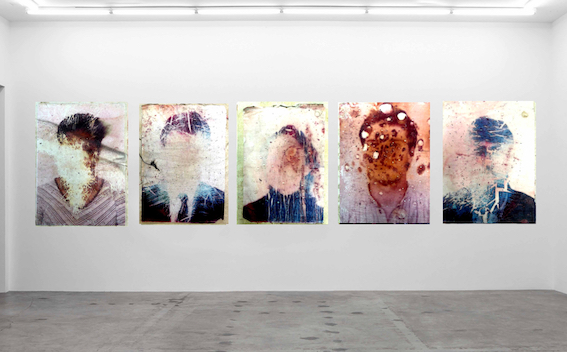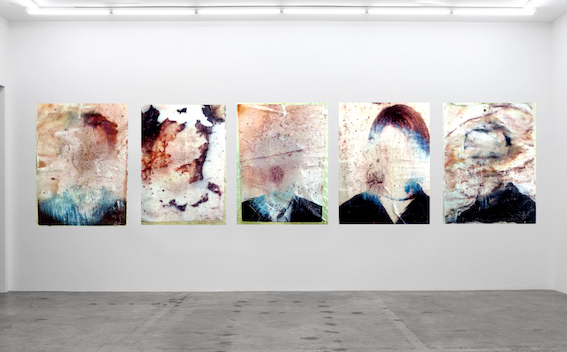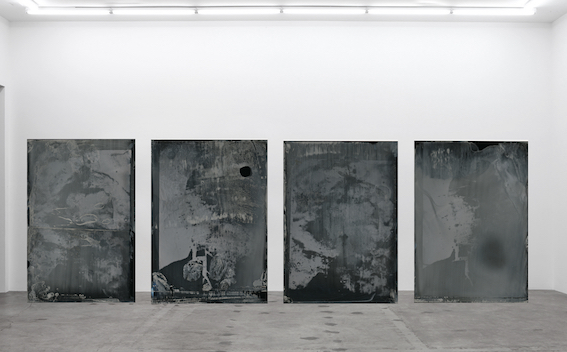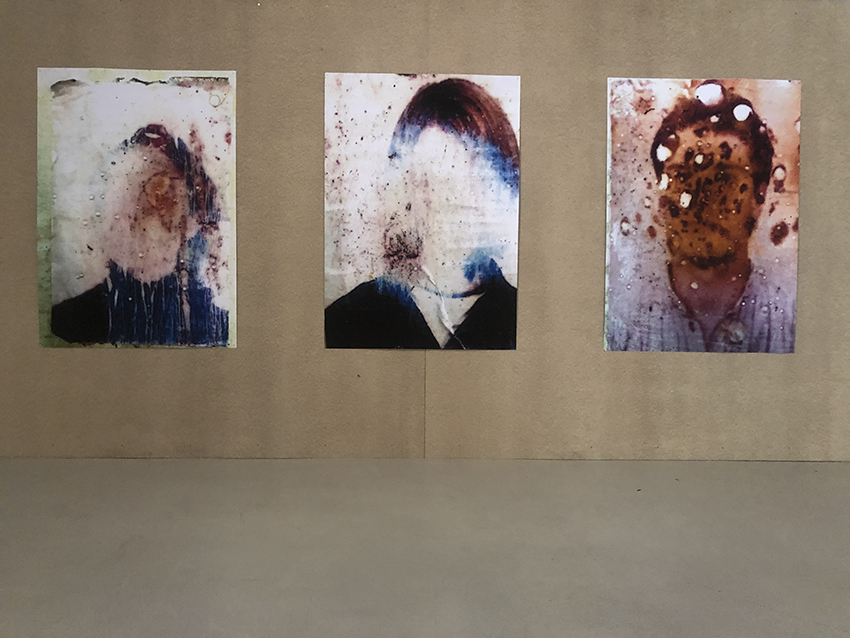


christine clinckx, Missing, Athens, 2019 wet collodion technique, photo on metal
The European migrant crisis primarily refers to the hundreds of thousands of migrants who have been
crossing the Mediterranean Sea towards the European Union since 2013 and the political reactions to it.
The refugees mainly come from war zones in the Middle East and Africa.
Greece is often the first
European mainland where they end up via the many islands.
During my wanderings in Athens last summer, I photographed a number of these "missing" migrants.
Their photo portraits were hanging on the streets of Athens, usually stuck against recent ruins, vacant buildings
from the 70s that have plagued the city center since the last European financial crisis. In Athens, most of
the parks have been taken by refugees and from the rock Lofos Strefi we saw the plastic tarpaulins that
protected their temporary residence. This has left a huge impression on me, as a person and as an artist.
The faces on the posters were reported missing and were already faded by the sun or scratched by passersby
when I discovered them. Tanned and forgotten, they have literally and figuratively become illegible. I
then re-photographed these photos of missing people with a mobile phone and once again made posters in
Belgium, so that they can also be shown here. In the meantime I have tried to re-photograph these pictures
of missing people in an analogue way. With a technical wooden camera from 1910 and the 19th century
wet collodium technique, I re-photographed these digital images from the computer screen after I had
distributed them on social media.
Faces (or fragments of faces) no longer appeared; the photos had now become completely unreadable.
The wet collodium technique dates from 1851 and was invented by the Englishman Frederick Scott Archer. A
photosensitive layer is applied to a metal and / or glass plate which is then exposed and developed with a
chemical process. This technique made it possible for the very first time to print a photo multiple times.
Before that, each photo was unique and unpredictable. These two ways of photographing are at odds with
each other. The one digital, sec, contemporary, (almost everyone worldwide now takes photos with a
mobile phone) which gives a fast reach via social media; the other slow, physical, old-fashioned and
unpredictable. Together and opposite, they offer a different dimension to the "Missing" given and the
possibilities to reprint and distribute the posters in circulation. The image has become illegible during the
process of representation and reproduction, and consequently the posters have left behind their original
purpose. They only testify of alienation and displacement. That is precisely why I want to show them.

EXPO